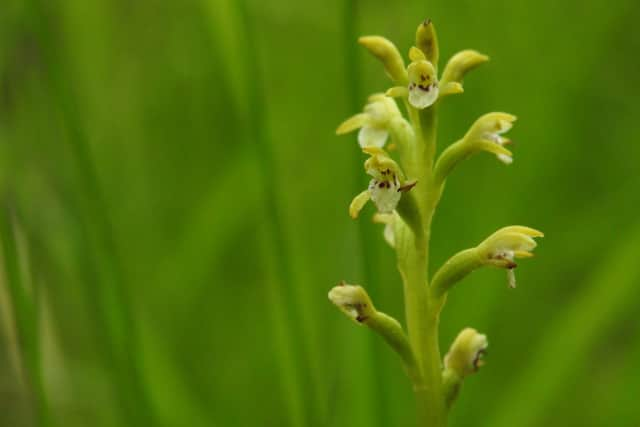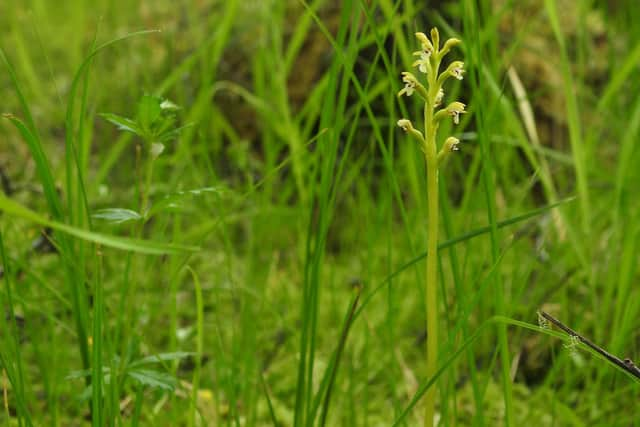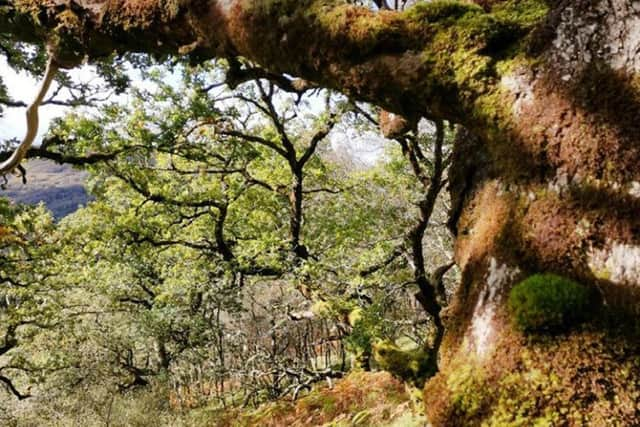Rare orchid found growing in Scottish rainforest in Wester Ross for first time in 250 years
The coralroot orchid was found in Wester Ross in 1772, the first example ever officially noted in the British Isles, but had not been recorded there since.
Now the delicate little plant has been spotted in an area of Celtic rainforest at the Coille Mhòr site of special scientific interest, on Balmacara Estate near the west coast village of Plockton.
Advertisement
Hide AdAdvertisement
Hide AdIts exact location is being kept secret to reduce the chances of it getting accidentally trampled.
The orchid, formally named Corallorhiza trifida, is classed as nationally scarce in the UK, meaning it has only ever been found in less than 100 locations across the country.
It is typically found in wet, swampy woodland in the more continental north-eastern areas of the UK, with very few records from the western side of Scotland.
According to the Botanical Society of Britain and Ireland’s database, it has been seen in only 25 sites in Scotland since 2020 and only three elsewhere in the UK – all in northern England.


The latest find was a happy accident, when it caught the eye of a visiting scientist during a field trip to Balmacara estate, which is owned and managed by the National Trust for Scotland.
And it was his second such discovery in a matter of days.
Ecologist Gus Routledge, who works with environmental charities Reforesting Scotland and Scotland the Big Picture, said: “Just the week before I’d discovered a new population of this special orchid in much more typical boreal birch-willow woodland near Inverness.
“I wasn’t really expecting to see it at Balmacara, but I’ve always got an eye out when walking through those wet woodlands.”


The orchid was last recorded in the area by John Lightfoot and Thomas Pennant in 1772.
Advertisement
Hide AdAdvertisement
Hide AdThe discovery was published in the first botanical book on Scottish plants, Flora Scotica, which recounts some of the earliest recorded botanical expeditions around the country.
Its location was described as “in a moist, hanging wood called Cabal, on the south side, near the head of Little Loch Broom”, but the exact site is not known.
Jeff Waddell, senior natural heritage advisor for the National Trust for Scotland, is familiar with the rare flower from a few other sites in Scotland.


He expressed delight at the new discovery.
“This is a special find and a great addition to the assemblage of rare plants found in Scotland’s rainforests, such as on the National Trust for Scotland’s Balmacara Estate,” he said.
“Gus’s record creates an incredible link through 250 years of botanical time, to one of the first expeditions to Scotland by John Lightfoot in the 1770s.
“It’s a great example of the nature, beauty and heritage that can be discovered at National Trust for Scotland sites all over the country.”
Corallorhiza trifida is unusual in that it gets most of its energy from a coral-like fungal mass at the base of its stem rather than through photosynthesis.
The fungi are in turn “plugged in” to trees such as willow and birch and joined via an underground network.
The orchid can only grow in places where this specific association between fungi and trees occurs.
Comments
Want to join the conversation? Please or to comment on this article.
